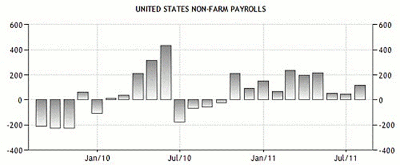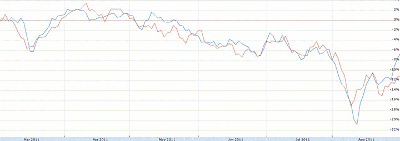While any announcement from the Fed wouldn’t come until the late-September meeting, a new round of quantitative easing would have major implications for the Australian dollar, as well as gold and the Swiss franc.
“Participants noted that devoting additional time to discussion of the possible costs and benefits of various potential tools would be useful, and they agreed that the September meeting should be extended to two days in order to provide more time.” – Minutes of August 9 Federal Open Markets Committee (FOMC) meeting
It’s just a question of “when,” not “if.”
Money-printing 3.0 is on the way. The mainstream likes to talk of monetary “hawks” and “doves” at the US Federal Reserve. The term “hawks” refers to those who are supposedly cautious about keeping interest rates low, as they fear it will cause higher inflation.
The term “doves” refers to those who are supposedly not cautious about keeping interest rates low. They see higher inflation as a necessary payoff in the drive to boost the economy.
In reality, there aren’t any hawks and doves at the Fed. They’re all just vultures in disguise. They’re pro higher inflation and more money printing. It’s just some are more pro-inflation than others.
So whether it’s at the Fed’s September, November, or December meeting (note: the Fed doesn’t meet monthly, it meets a total of nine times this year), it’s more likely than not that the Fed will unleash another round of money printing.
You only have to read the latest minutes and compare the language to previous minutes to see they’re gearing up for it.
Here’s a quote from the March meeting noting non-farm payrolls:
“The labor market continued to show signs of firming. Private non-farm payroll employment rose noticeably in February after a small increase in January, with the swing in hiring likely magnified by widespread snowstorms, which may have held down the employment figure for January.”
In other words, the Fed liked what it saw. Which is hardly surprising seeing as it was half-way through its money-printing 2.0 ruse.
Here’s what the Fed said at the August meeting:
“Private non-farm employment rose at a considerably slower pace in June and July than earlier in the year, and employment in state and local governments continued to trend lower. The unemployment rate edged up, on net, since the beginning of the year, and long-duration unemployment remained very high. Meanwhile, the labor force participation rate moved down further through July.”
NEXT: More Telling Non-Farm Payrolls Data; Impact on Aussie Dollar
|pagebreak|Now look at the following chart. It shows monthly non-farm payroll numbers over the last two years:
What do you notice the most? That’s right, non-farm payroll numbers are volatile. It’s pretty hard to analyze the data and draw conclusions on a monthly basis.
Yet back in March, when the Fed met, the members looked at the January and February numbers and liked what they saw. Things were heading in the right direction…they thought.
Roll forward a few months and two months of low numbers, and suddenly the Fed needs to do something.
The other thing you’ll notice from reading the August minutes is there’s no mention of the drop in the July unemployment rate from 9.2% to 9.1%, and no mention of the fact that four days before the meeting, the Labor Department announced total payrolls had beaten market expectations.
A cause for celebration? Not on your life! As far as the Fed is concerned, it’s got to do something. If they highlight the positives, it’s less reason for them to meddle.
So now the Fed has to focus on the negatives. We wouldn’t want the economy righting itself, would we? Not when there’s meddling to be done.
But let’s get something straight. The actual underlying economy hasn’t changed. It was the same in June and July as it was in March: stuffed.
The only difference is the Fed is now doing the old “glass half empty” routine so it can keep printing money and keep propping up its pals at the banks.
And the markets can see the Fed money printing, too. Traders are placing the same old bets. Gold has rebounded after the heavy selloff last week. It’s now trading at US $1,827 and AUD $1,713.
And as you’d expect, traders are selling the safety of the Swiss franc (CHF) and buying the risky Aussie dollar (AUD).
As you know, the Swiss franc is one of our early warning signals for crashing markets. The climb back to CHF 0.875 has the alarm bells ringing again…albeit quietly at the moment.
It tells you traders are backing out of safety and plunging forward into risky bets.
The 500-point snapback in the Aussie market since the recent low proves this is happening. In fact, if you look at the charts, there’s almost a perfect correlation between the Aussie dollar/Swiss franc exchange rate (blue line), and the S&P/ASX 200 (red line):
But remember, don’t start thinking this is a sure sign of a strong Aussie economy and share market. The reality is that the extreme volatility is the result of the actions of one man, Fed Chairman Ben Bernanke.
One thing is for sure: expect the volatility to continue as we approach and pass the next Fed meeting on September 20-21.
By Kris Sayce of MoneyMorning.com.au
This article first appeared on Counting Pips























